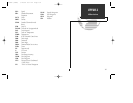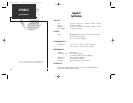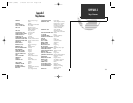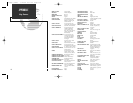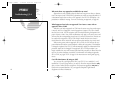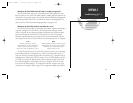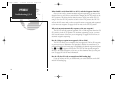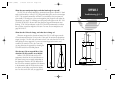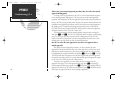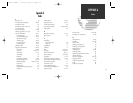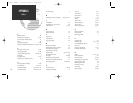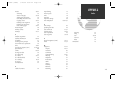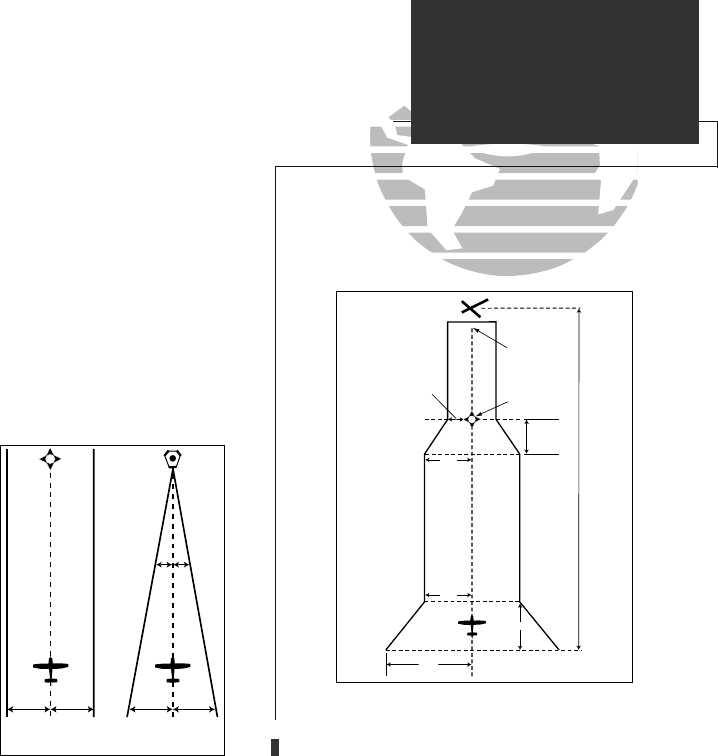
When does turn anticipation begin, and what bank angle is expected?
The GPS 155 will smooth adjacent leg transitions based upon a nominal 15º bank
angle (with the ability to roll up to 25º) and provide three pilot cues for turn anticipa-
tion: 1) The waypoint annunciator will flash 15 seconds before the turn point and
glow steadily 2 seconds prior to the turn anticipation point. Begin the turn when the
annunciator goes steady. 2) A flashing ‘next dtk’ prompt will appear on the GPS 155’s
CDI field. Set the HSI to the next dtk value when the waypoint annunciator starts
flashing. 3) The To/From indicator on the GPS CDI will flip momentarily to indicate
that you have crossed the midpoint of the turn. For more on turn anticipation, see
pages 60-61 & 67.
When does the CDI scale change, and what does it change to?
Whenever an approach is selected and armed, the GPS 155 will begin a smooth
CDI scale transition from the 5.0 nm to the 0.3 nm scale 30 nm from the destination
airport (see right). The CDI scale will remain at the 0.3 nm scale from the FAF to the
MAP during the active approach. If you are in a missed approach situation, and
would like to return the CDI to the 1 nm scale,
you may deactivate the approach by releasing the
GPS APPR switch from the ARM position.
Why does my CDI not respond like a VOR
when the GPS SEQ switch is set to HOLD?
Unlike a VOR, the CDI scale used on GPS
equipment is based on the cross-track distance to
the desired course, not an angular relationship to
the destination. Therefore, the CDI deflection on
the GPS will be consistent regardless of the distance
to the destination, and will not become less sensi-
tive when you are further away from the destina-
tion. For more on the CDI scale, see pages 64-65.
115
APPENDIX F
Troubleshooting Q & A
CDI Scale Transition
5 nm5 nm 5 nm5 nm
2
nm
2
nm
GPS VOR
0.3 nm
30 nm
2nm
FAF
MAP
1 nm
1 nm
5 nm
1 minute
155man (GOOD) 7/24/98 1:58 PM Page 115



